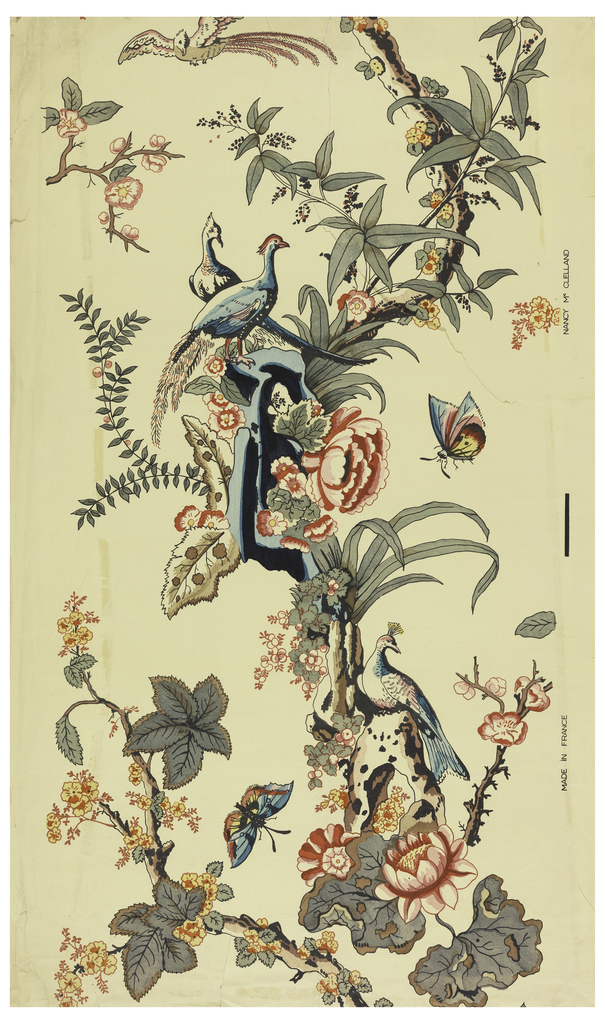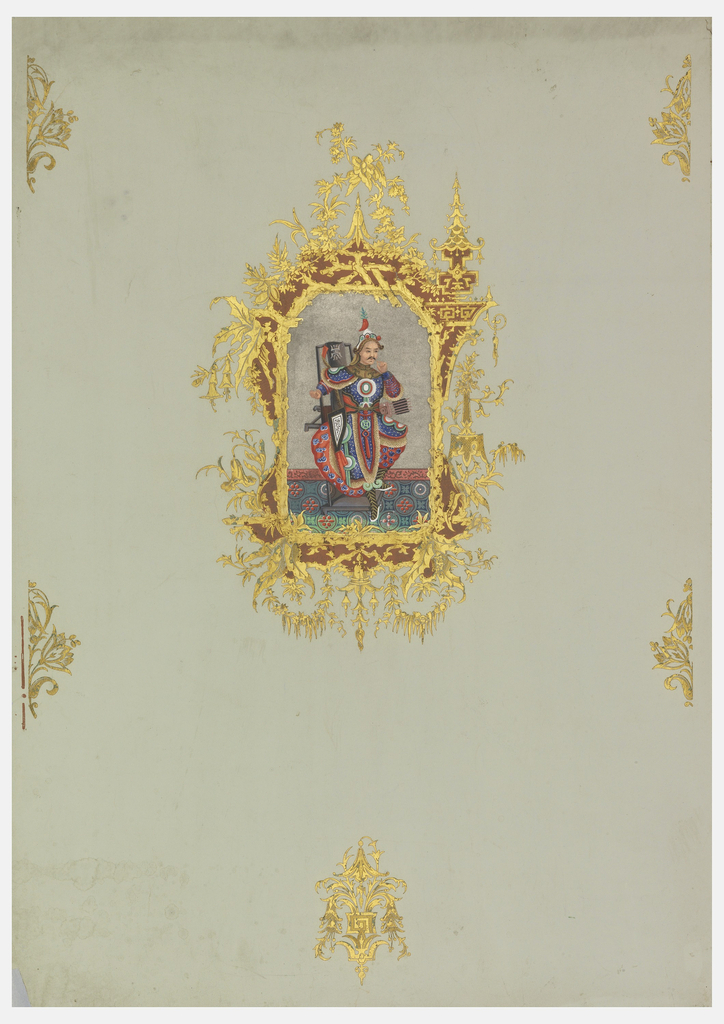This textile’s whimsical chinoiserie scene was inspired by the work of French artist Jean-Baptiste Pillement (1728 – 1808), and printed by Bromley Hall, a prominent textile printing manufactory in Middlesex, England. Pillement’s illustrations inspired many late-eighteenth-century textile designs. Although this design features many of the artist’s signature motifs – oversized flowers, a winding staircase and...
Author: Zenia Malmer To the modern eye, this 19th century teapot, made by Edwin James Drew Bodley, who was in charge of an English china and earthenware manufacturer in Staffordshire, might border on kitsch. The spout, handle and edges are decorated with moulded bamboo stalks, with gilding to accentuate their nodes. Bright pink panels feature...
Though enigmatic, the iconography of this wallpaper—with its flowers blooming in full, Chinese phoenixes, and scenes of men from the East—expresses the Rococo and chinoiserie styles of the late Georgian and early Victorian periods in England. These styles actually have their origin in the seventeenth and eighteenth centuries, but throughout the 1800s, revival styles proliferated...
This Object of the Day celebrates one of many treasured objects given by Clare and Eugene V. Thaw to Cooper Hewitt, Smithsonian Design Museum. It is republished here in memory of Eugene V. Thaw. Click on this link to read more about the Thaws and their gifts to Cooper Hewitt. This room portrait is one of...
Full of life, movement, and color, this design for a wallpaper is a reproduction of Chinese wallpaper by one of the leading antique and wallpaper scholars of her day, Nancy McClelland. McClelland is known for her attention to detail and meticulous research that went into each of her reproductions. She was also a successful interior...
This beautiful sidewall is a great example of the Rococo Revival style at its most wild and vivid. Its design, a repeating landscape vignette floating in space bordered by sprays of flowers, is common in 18th century wallpapers. This paper also uses the old-fashioned technique of block-printing, despite coming from a time when machine-printing dominated...
What is the importance of being able to place a name upon the things we create? Perhaps it gives one the ability to become more than just a faceless member of a crowd, to leave behind a mark of what they have made. Historically, women have often remained nameless with the things they create. This is...
The decoration of this coffee pot, with its solid ground of cobalt blue, is of a type known as “bleu persan”, after a style of Persian ceramics imported to Europe in the late seventeenth century. Cobalt is one of the few compounds capable of withstanding high kiln temperatures, and consequently is the ideal medium for...
This elaborate Rococo-revival wallpaper incorporates several different techniques. The print is an applied lithograph, the salmon-color framework is woodblock printed, and the gold is a stamped metal foil. The application of the stamped foil embosses the paper as the foil is being applied, creating a much richer and more reflective surface than a printed gold...








